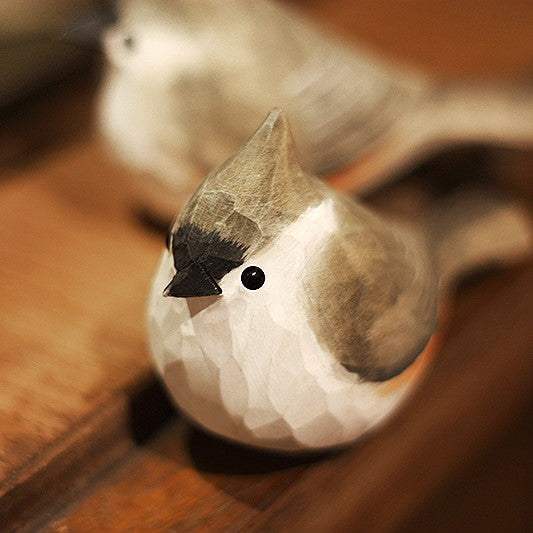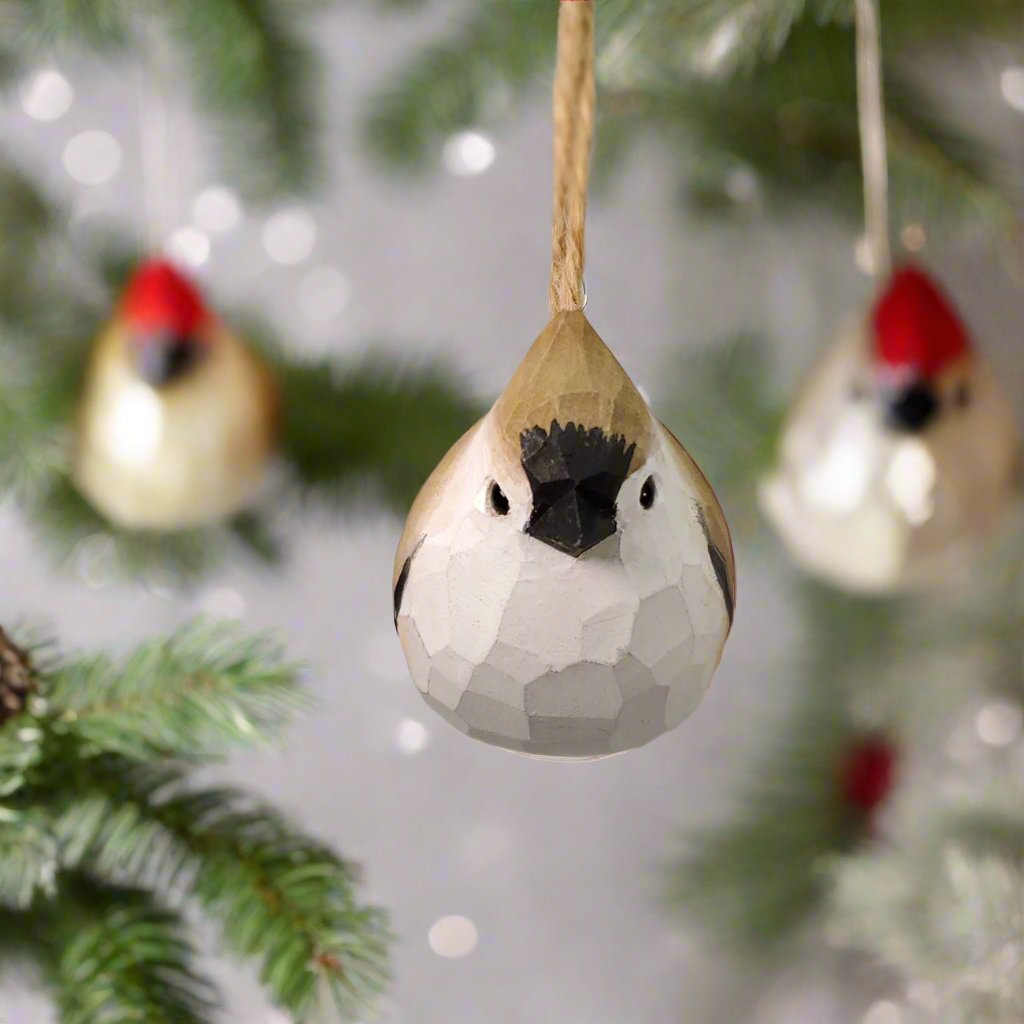
Tufted Titmouse Courtship Strategies: How They Attract a Mate
Share
Tufted Titmouse Courtship Strategies: How They Attract a Mate
 The Tufted Titmouse (Baeolophus bicolor) is a small yet lively songbird found in North America, known for its soft gray feathers, big black eyes, and distinctive tufted crest. While these birds may seem simple, their courtship rituals are highly strategic and involve singing, food-sharing, aerial displays, and pair bonding. In this blog, we’ll explore how Tufted Titmice attract mates and what makes a successful pair.
The Tufted Titmouse (Baeolophus bicolor) is a small yet lively songbird found in North America, known for its soft gray feathers, big black eyes, and distinctive tufted crest. While these birds may seem simple, their courtship rituals are highly strategic and involve singing, food-sharing, aerial displays, and pair bonding. In this blog, we’ll explore how Tufted Titmice attract mates and what makes a successful pair.
1. The Power of Song: Singing to Impress 🎶
Male Tufted Titmice use song as a primary tool for attracting females. Their most common call is a clear, whistled “peter-peter-peter” sound, repeated in rapid succession.
Why Singing Is Important in Courtship:
✔ Stronger, more frequent songs indicate a healthier and more dominant male.
✔ The consistency and pitch of the song can influence a female’s choice.
✔ Males use singing to defend their territory from rivals while attracting potential mates.
Tip: During breeding season, if you hear a Tufted Titmouse singing persistently, it is likely a male trying to win over a female!
2. Food Sharing: The Romantic Gift 🍒
One of the most important courtship behaviors in Tufted Titmice is mate-feeding, where the male offers food to a female.
How Mate-Feeding Works:
✔ The male finds a high-quality food item such as a seed, berry, or insect.
✔ He presents the food to the female in a gentle and submissive manner.
✔ If the female accepts the food, it signals she is interested in pairing with him.
✔ This behavior also proves that the male is a good provider—a crucial factor in raising chicks.
Tip: A Tufted Titmouse male that consistently offers food is far more likely to secure a mate!
3. Aerial Displays: Showing Off Agility in Flight ✈️
Tufted Titmice are agile fliers, and males often use their speed and acrobatic abilities to attract a mate.
How Males Use Flight in Courtship:
✔ They engage in chasing flights, where a male pursues a female through the trees.
✔ Quick, swooping movements show off their agility and strength.
✔ Females sometimes test the persistence of males by making them work harder to keep up.
Tip: This chase behavior is a way for the female to evaluate the endurance and skill of a potential mate!
4. Nest Site Selection: Helping the Female Find a Home 🏡
Unlike some birds where males construct nests, Tufted Titmice rely on natural cavities in trees or man-made birdhouses.
The Role of the Male in Nest Selection:
✔ He scouts potential nesting sites and presents options to the female.
✔ The female ultimately chooses the best location, but a well-selected site improves a male’s chances of being chosen.
✔ Males sometimes offer nesting materials, such as moss, bark, and fur, to further impress the female.
Tip: If you want to attract Tufted Titmice to your yard, setting up a wooden birdhouse can encourage nesting!
5. Pair Bonding: Building a Long-Term Relationship 💕
Unlike many songbirds that change mates every season, Tufted Titmice form strong, long-term pair bonds.
✔ Mated pairs stay together year-round, even outside the breeding season.
✔ They forage together, maintaining their bond through cooperative feeding.
✔ Males continue protecting the female long after courtship is over.
Tip: Once paired, these birds work as a team, making them one of the more monogamous songbird species.
6. Territory Defense: Keeping Rivals Away 🚫
 Males must defend their nesting area to ensure safety for their mate and future offspring.
Males must defend their nesting area to ensure safety for their mate and future offspring.
How Males Defend Their Territory:
✔ Singing from high perches to warn intruders.
✔ Chasing away other males who come too close.
✔ Engaging in wing-fluttering displays to show dominance.
These behaviors ensure that the pair’s territory remains secure for nesting and chick-rearing.
7. After Mating: Continued Care & Protection 🐣
Even after pairing, the male Tufted Titmouse remains active in helping the female and their young.
✔ He continues feeding the female while she incubates eggs.
✔ Once chicks hatch, he helps bring food to the nest.
✔ The male stays on guard to protect the nest from predators like snakes and hawks.
Tip: This high level of paternal investment helps ensure higher chick survival rates.
Conclusion
 The Tufted Titmouse has a fascinating and well-structured courtship process. Males must sing, provide food, display flight agility, and defend territory to attract a mate. Once paired, these birds stay together year-round, forming strong monogamous bonds and working as a team to raise their young.
The Tufted Titmouse has a fascinating and well-structured courtship process. Males must sing, provide food, display flight agility, and defend territory to attract a mate. Once paired, these birds stay together year-round, forming strong monogamous bonds and working as a team to raise their young.
If you hear the “peter-peter-peter” call in your backyard, you might be witnessing a Tufted Titmouse trying to impress his future mate!






















